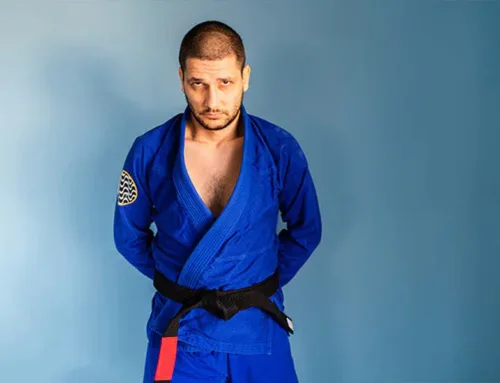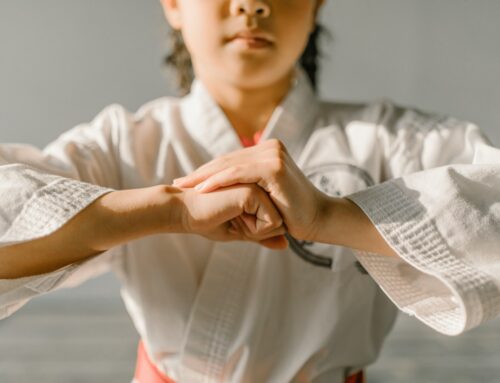Combining multiple martial arts disciplines into one training program provides a well-rounded approach to fitness and self-defense. Each martial art has its unique strengths and focuses, offering different techniques and skills that can complement each other. By integrating these disciplines, you can create a comprehensive training program that enhances your physical abilities, mental toughness, and overall versatility.
For example, Mixed Martial Arts (MMA) combines striking and grappling from various martial arts, offering a full-body workout that builds strength, flexibility, and endurance. Tae Kwon Do focuses on high, fast kicks and agility, improving your balance and speed.
Jiu Jitsu, on the other hand, is all about ground fighting and submissions, providing excellent techniques for self-defense and close-quarters combat. Together, these disciplines make you a more well-rounded martial artist.
The benefits of combining martial arts extend beyond physical fitness. Learning different styles challenges you mentally, keeping you engaged and motivated. It teaches you to adapt to different situations and opponents, making you more versatile and effective in real-world scenarios.
Understanding the Benefits of Combining Martial Arts
Combining multiple martial arts into your training regimen creates a comprehensive and well-rounded experience. Integrating different disciplines allows for a more complete development of skills, making you versatile. Each martial art has unique techniques and philosophies; combining them provides a richer learning experience and equips you with a diverse set of skills.
The key benefits of combining martial arts include improved flexibility, strength, and adaptability. Practicing different forms, like Tae Kwon Do and Jiu Jitsu, challenges your body in various ways. Tae Kwon Do emphasizes high kicks and dynamic movements, which enhance leg strength and flexibility.
On the other hand, Jiu Jitsu focuses on grappling and ground control, building overall body strength and endurance. By integrating these varying techniques, you create a well-rounded fitness program that targets all muscle groups, thus enhancing your physical capabilities.
A critical advantage of combining martial arts is versatility. Learning different styles prepares you to handle various situations. For instance, if you encounter an opponent skilled in striking, your grappling knowledge from Jiu Jitsu can give you the upper hand. This ability to switch between techniques and adapt to different scenarios makes you more effective in both self-defense and competitive settings.
Key Martial Arts Disciplines to Combine
Incorporating multiple martial arts disciplines into your training can significantly boost your skills and provide a balanced approach to fitness and self-defense. Three key martial arts to consider are Mixed Martial Arts (MMA), Tae Kwon Do, and Jiu Jitsu. Each brings unique strengths to your training routine, and together, they form a robust foundation.
Mixed Martial Arts (MMA) is a fusion of various martial arts styles, focusing on both striking and grappling techniques. MMA training provides a comprehensive set of skills suitable for any combat situation. It teaches you how to effectively transition between different combat techniques, making it an excellent core discipline.
Tae Kwon Do is known for its high, fast kicks and precise movements. This martial art enhances your speed, flexibility, and kicking power. The discipline and focus required in Tae Kwon Do create a strong mental foundation, improving concentration and reflexes.
Jiu Jitsu focuses on grappling, ground fighting, and submission holds. It teaches you how to leverage your body’s mechanics to control and submit your opponent, no matter their size. This discipline is invaluable for self-defense, as it shows how to neutralize threats through technique rather than brute strength.
Together, these martial arts complement each other perfectly. MMA provides an overall framework that integrates well with the specialty techniques of Tae Kwon Do and Jiu Jitsu. Tae Kwon Do’s striking skills can seamlessly transition into MMA’s combinations, while Jiu Jitsu’s grappling techniques add depth to your combat strategies. By combining these disciplines, you create a versatile and effective training program.
Creating a Balanced Training Routine
Structuring a balanced training routine is crucial for getting the most out of combining multiple martial arts. A well-planned schedule ensures that you develop skills evenly and avoid overtraining any one area. It’s essential to mix different types of training while allowing enough time for recovery and rest.
Start by allocating specific days for each martial art. For example, dedicate two days a week to MMA, focusing on both striking and grappling. Use another two days for Tae Kwon Do to enhance your kicks and flexibility. Finally, set aside one or two days for Jiu Jitsu, concentrating on ground techniques and submissions. This allocation helps balance your skill development.
Include varied intensity levels in your routine. On high-intensity days, push yourself with harder drills and sparring sessions. Follow these with low-intensity days focused on technique refinement and light practice. This variation helps in muscle recovery and keeps your training interesting.
Here’s an example of a balanced weekly training schedule:
- Monday: High-intensity MMA (striking and grappling drills)
- Tuesday: Tae Kwon Do (kick techniques and flexibility exercises)
- Wednesday: Rest or light cardio
- Thursday: Jiu Jitsu (ground techniques and submission practice)
- Friday: MMA (combination drills and sparring)
- Saturday: Tae Kwon Do (form practice and light sparring)
- Sunday: Rest
This routine ensures comprehensive skill development and sufficient rest, reducing the risk of injury and burnout.
Overcoming Challenges in Multi-Discipline Training
Training in multiple martial arts can present challenges like time management and physical fatigue. Balancing different disciplines requires careful planning and commitment. However, with the right strategies, you can overcome these obstacles and stay on track.
Time management is often the biggest challenge. To tackle this, allocate specific time slots for each discipline, as suggested in the balanced training routine. Tight schedules can benefit from shorter, more focused training sessions. Consistency is more important than duration, so even 30-minute sessions can be effective.
Physical fatigue is another common hurdle. To manage this, prioritize proper nutrition and hydration. Fueling your body with the right nutrients helps in quicker recovery. Incorporating regular rest days and listening to your body are also essential. Overtraining can lead to injuries, so it’s crucial to give your muscles time to heal.
Staying motivated is key to consistent training. Set realistic, achievable goals for each martial art. Whether it’s mastering a new technique or improving your endurance, having clear objectives keeps you engaged. Joining a martial arts community or training with a buddy can also provide motivation and support.
Here are some strategies to stay consistent:
- Set Achievable Goals: Break down your long-term goals into smaller, measurable steps.
- Track Your Progress: Use a journal or app to log your training sessions and improvements.
- Stay Accountable: Train with a partner or join group classes to keep yourself committed.
- Listen to Your Body: Recognize signs of fatigue and take appropriate rest to avoid burnout.
By following these strategies, you can effectively manage the challenges of multi-discipline training and achieve continuous progress.
The Power of Fusion: Combining Martial Arts for Total Body Training
Combining different martial arts into your training routine offers numerous benefits, creating a holistic approach to fitness and self-defense. Understanding the unique elements of MMA, Tae Kwon Do, and Jiu Jitsu allows you to structure a balanced training schedule that enhances flexibility, strength, and versatility. Overcoming common challenges such as time management and physical fatigue is achievable with proper planning and a focus on motivation and consistency.
If you’re ready to experience the diverse benefits of multi-discipline martial arts training in Buffalo, join us at Pride Martial Arts Academy. Our expert instructors can help you craft a personalized training plan suited to your goals. Start your journey towards becoming a well-rounded martial artist!







